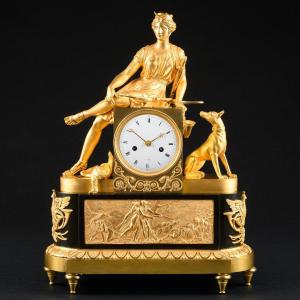See our website for more detailed photos: LINK
Refined and rare Empire clock in gilded and patinated bronze, representing Diana the huntress, attributed to Ravrio. Diana holds a hunting horn, a bow and her quiver while she sits on the case containing the clockwork, adorned with rosette foliage. Her faithful dog is seated at her side and a prey bird is lying at her feet. The clock is based on the model of the famous bronzier Antoine André Ravrio (1759-1814). A clock of this same model can also be found in the collections of Villa Masséna in Nice, the Mobilier National in Paris and the State Historical Museum in Moscow. This wonderful clock is of important size and the quality of making and the superbly detailed chiseling are befitting for this clock in excellent original condition with it’s beautiful mercury gilding.
A white enamel dial, signed “à Paris”, with Roman and Arabic numerals and gilt bronze fleur-de-lys hands for the hours and minutes, form the face of the clockwork with silk thread suspension. The partly patinated oblong base, resting on six spinning tops, is embellished with a chiseled frieze of palmettes and a rich bas-relief representing the episode of the death of Actaeon. Further, the rounded sides are adorned with sublimely chiseled falcons and further attributes of the hunt.
Actaeon was a young prince, student of the centaur Chiron, who became a very skilled hunter. During a hunt he surprised the goddess Diana while she was taking a bath. Furious, she then transformed him into a deer and Actaeon died shortly after being torn apart by his own dogs who did not recognize him, and were driven mad with rage by the goddess.
Paris, circa 1805.
Dimensions: height 55 cm, width 42.5 cm, depth 18 cm.
André-Antoine Ravrio (1759 – 1814)
André-Antoine Ravrio was one of the greatest French bronziers who learned the work of a bronze caster (or “fondeur”) under his father, André. The family of André Ravrio had been bronze casters since 1661. Subsequently, in 1774, the great bronzier Pierre-Philippe Thomire personally recommended Ravrio to the comte d’Artois. Only three years later, in 1777, he was received as a maître-fondeur and in 1790 he set up his own business. Ravrio’s bronzes are regarded as some of the most beautiful of their kind.
Although Ravrio was successful during Louis XVI’s reign, his success reached it’s peak under Napoleon Bonaparte. Ravrio participated in the first Exposition de l’Industrie in Paris in 1803. Later in 1806 he supplied a number of bronze furnishings for the Empress Joséphine’s apartments in the Tuileries. Subsequently he was appointed to bronzier to the Emperor in 1810. In this capacity he delivered some of the finest Empire bronze pieces to many of the Imperial residences like Fontainebleau, the Tuileries, Saint-Cloud, Compiègne and Versailles.
Details Of The Empire Clock “Diana Huntress”
This early Empire period clock presents itself with it’s mercury gilding in an excellent state of preservation. The clock is in an perfectly working condition and the movement with anchor escapement and silk thread suspension strikes the hours and half hours on a bell. Also, it has been cleaned and serviced by a professional clock maker. The clock comes complete with its pendulum, key and bell.
Literature
- Collection of the Mobilier National inv. number IAB-241-000.
- Collection of the Villa Masséna in Nice.
- Sotheby’s New York, 13 April 2016, where an identical clock appeared in auction.
We send this article worldwide, professionally packaged, with registered and fully insured shipping at a fair price.




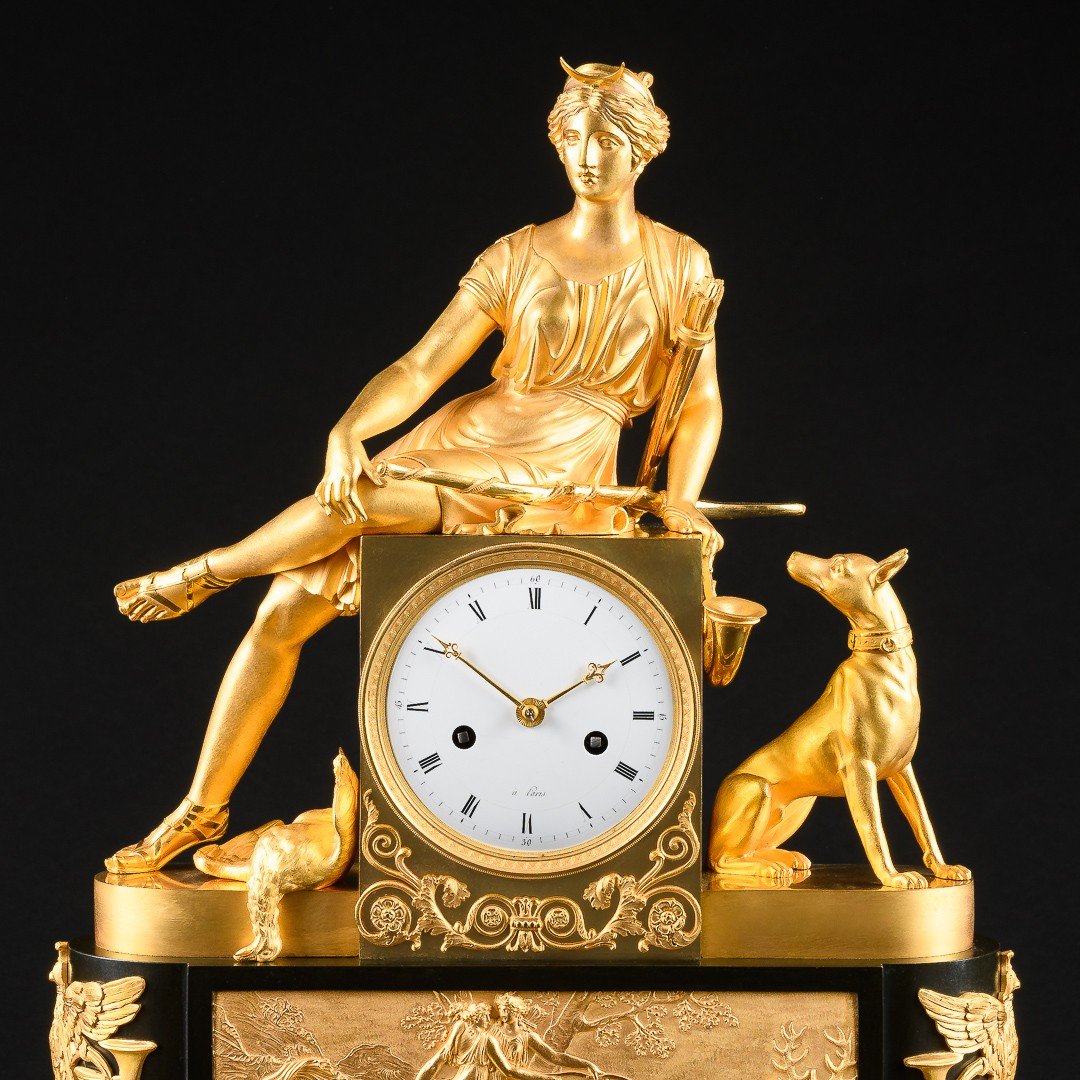


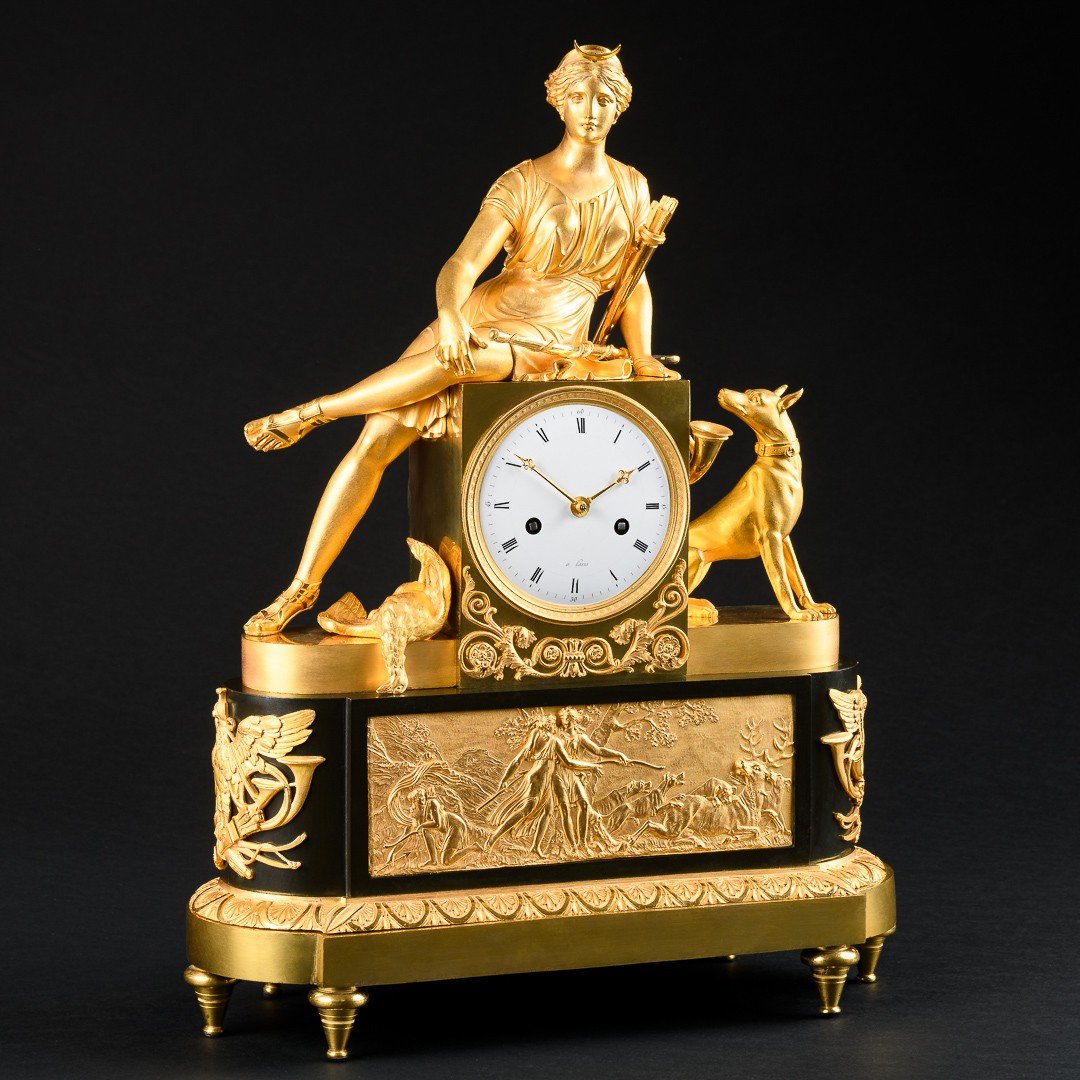


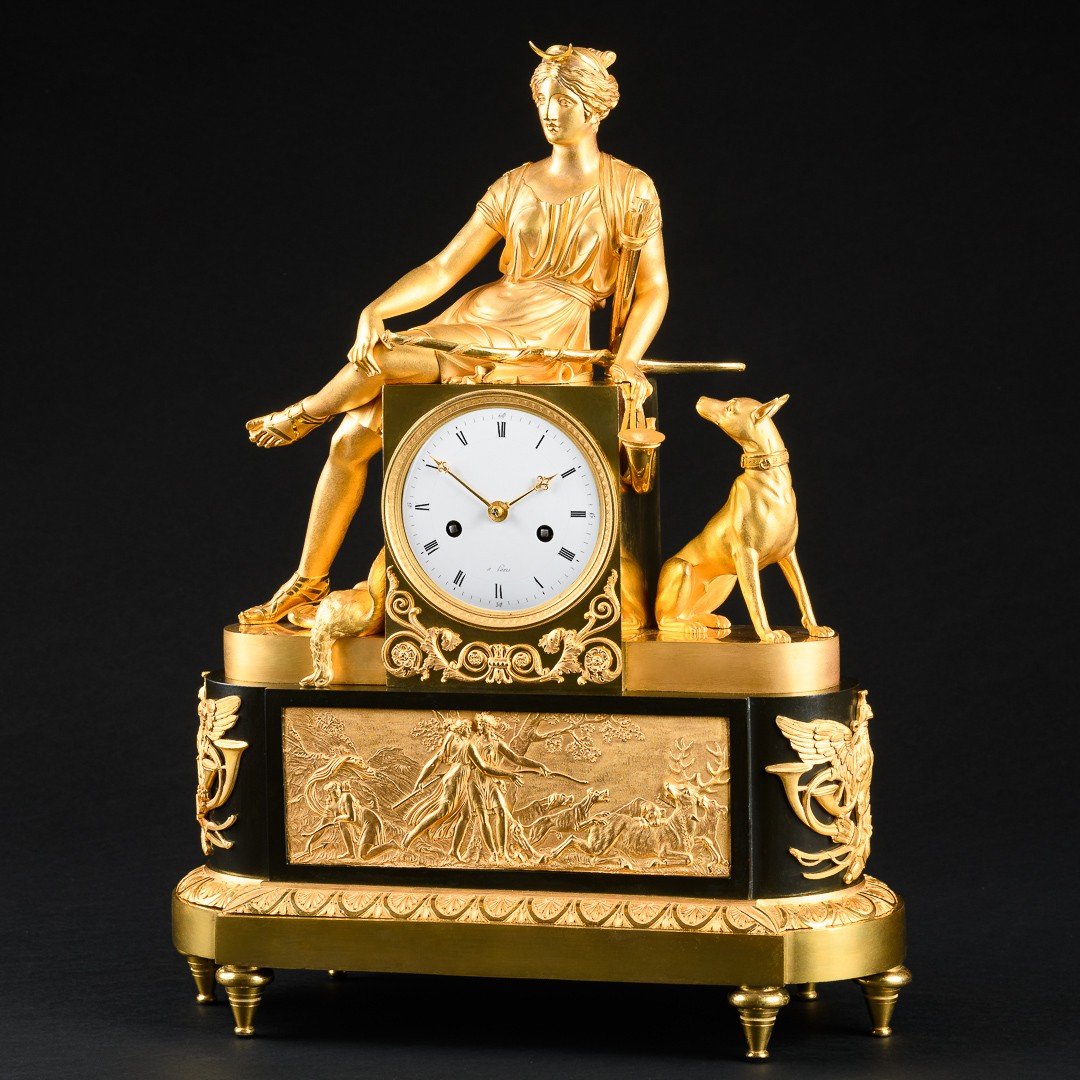

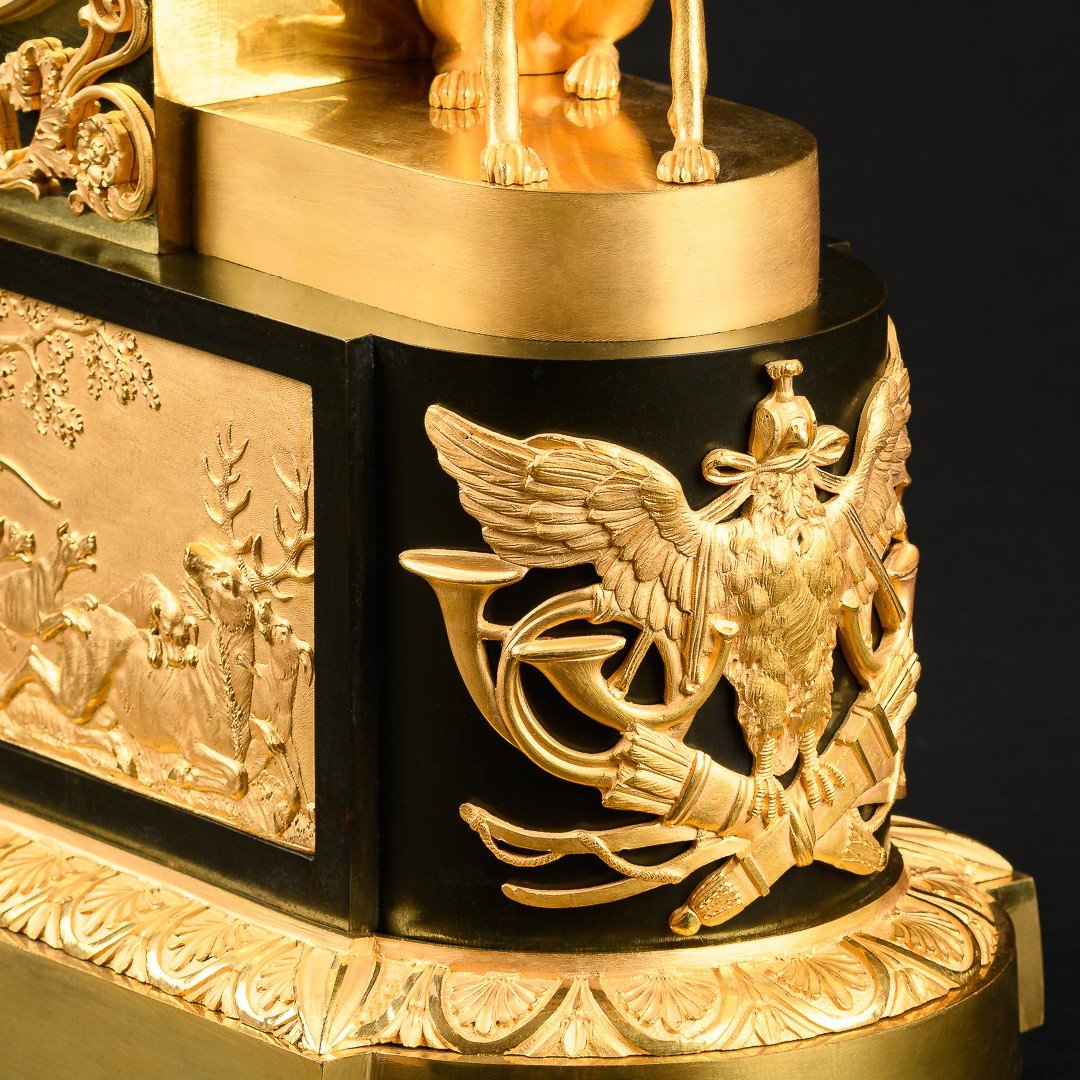
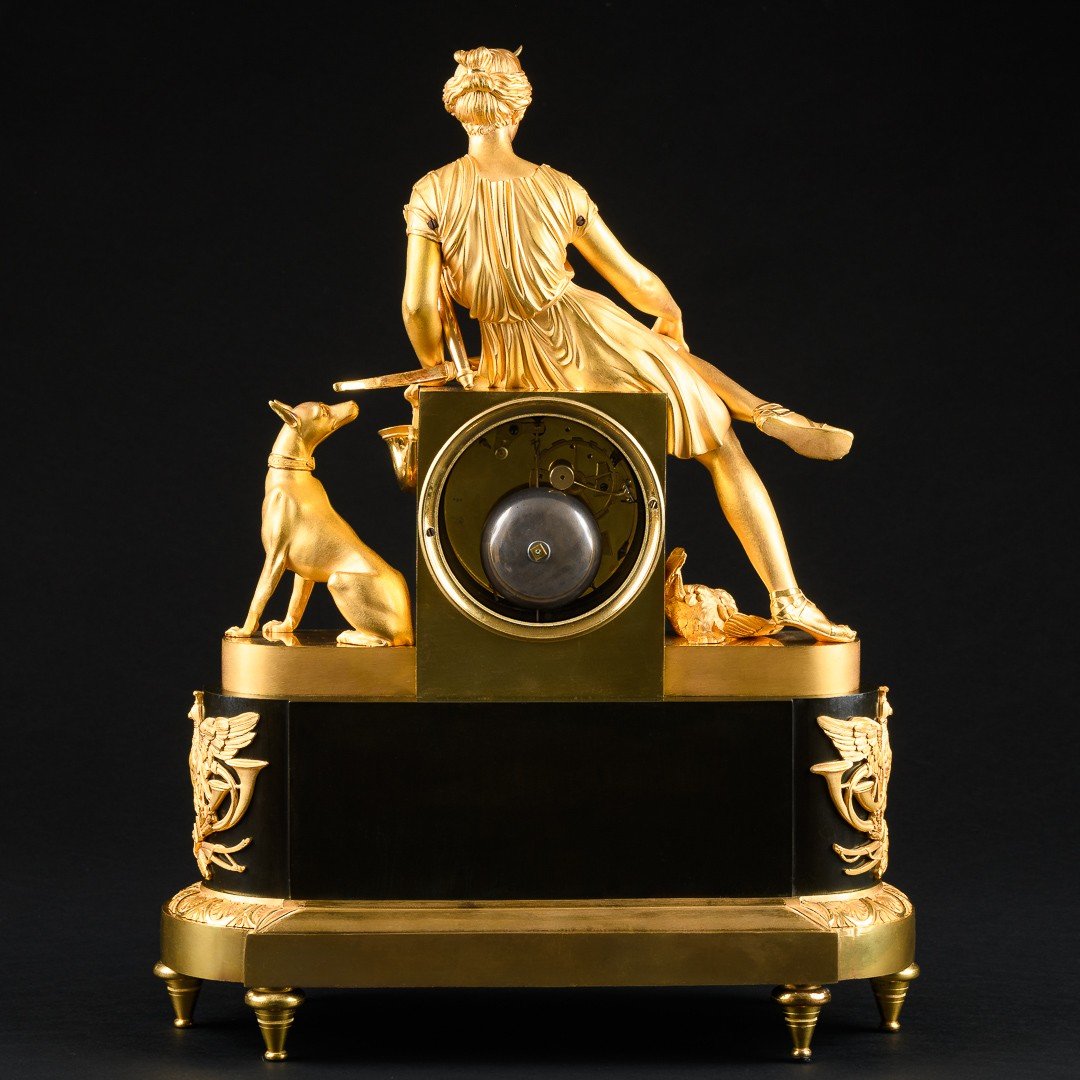
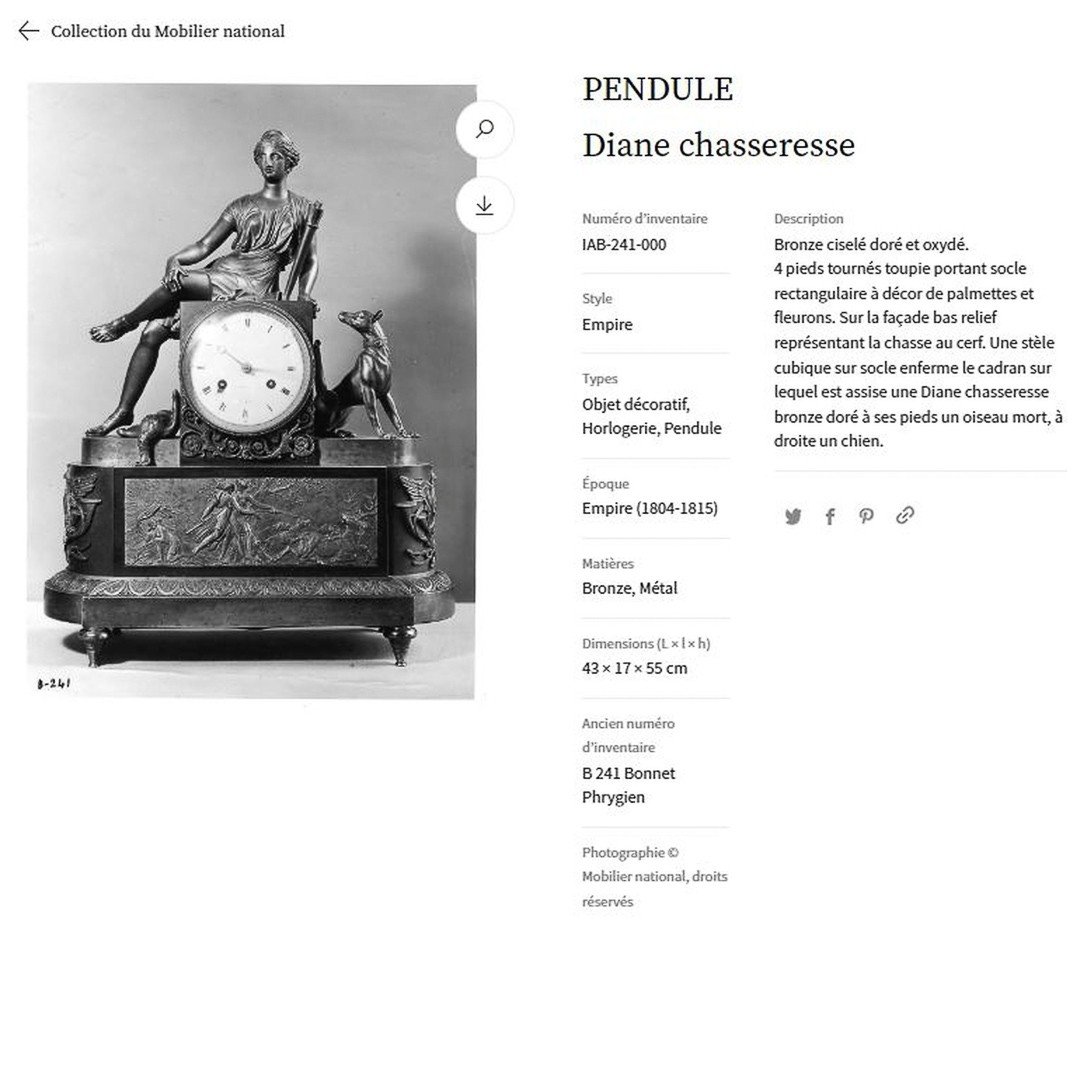

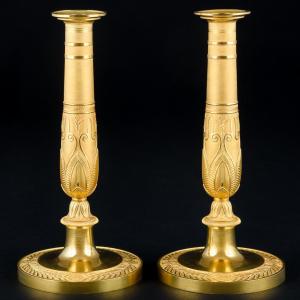

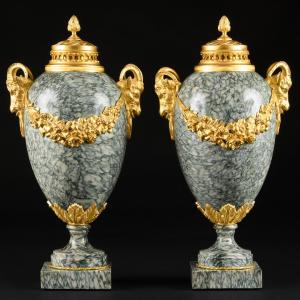


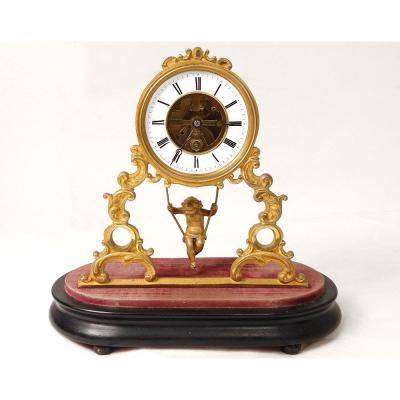
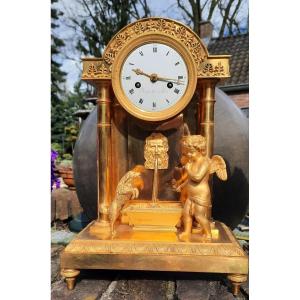







 Le Magazine de PROANTIC
Le Magazine de PROANTIC TRÉSORS Magazine
TRÉSORS Magazine Rivista Artiquariato
Rivista Artiquariato
